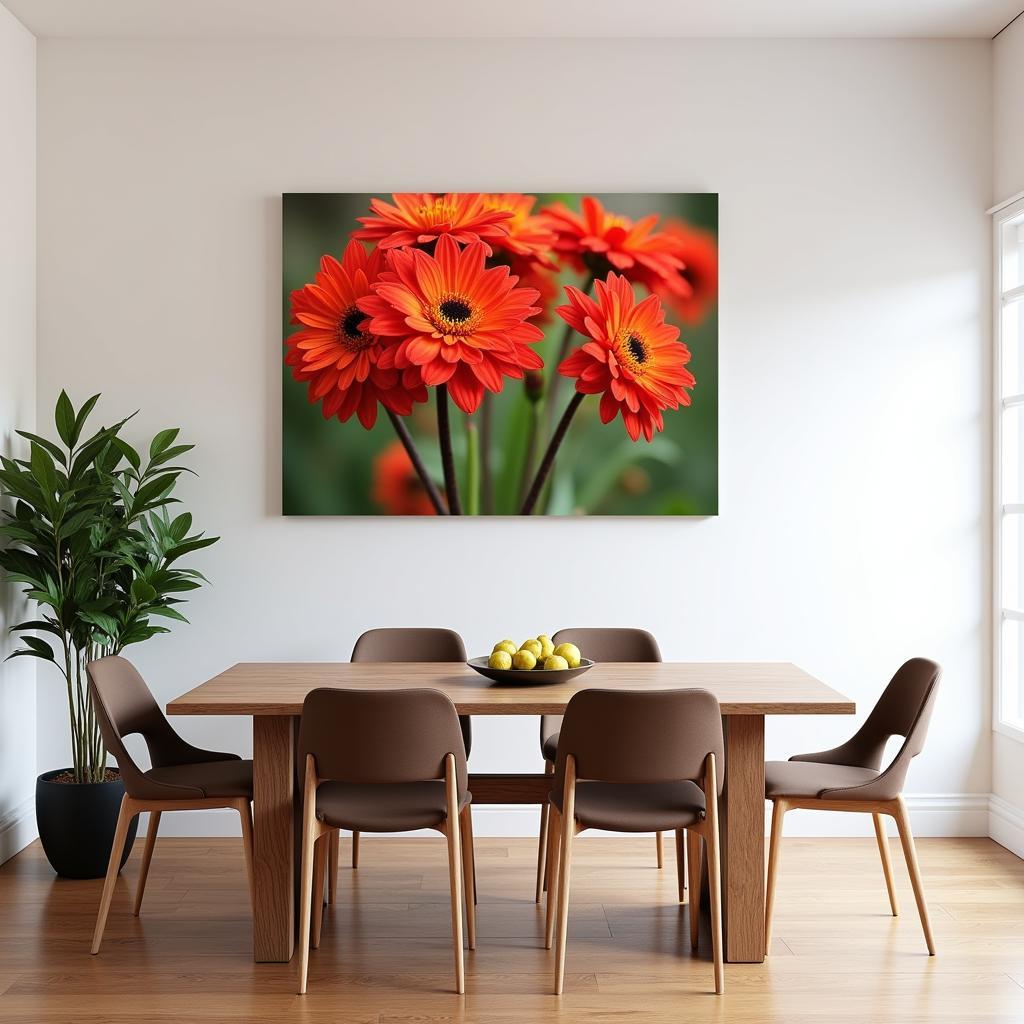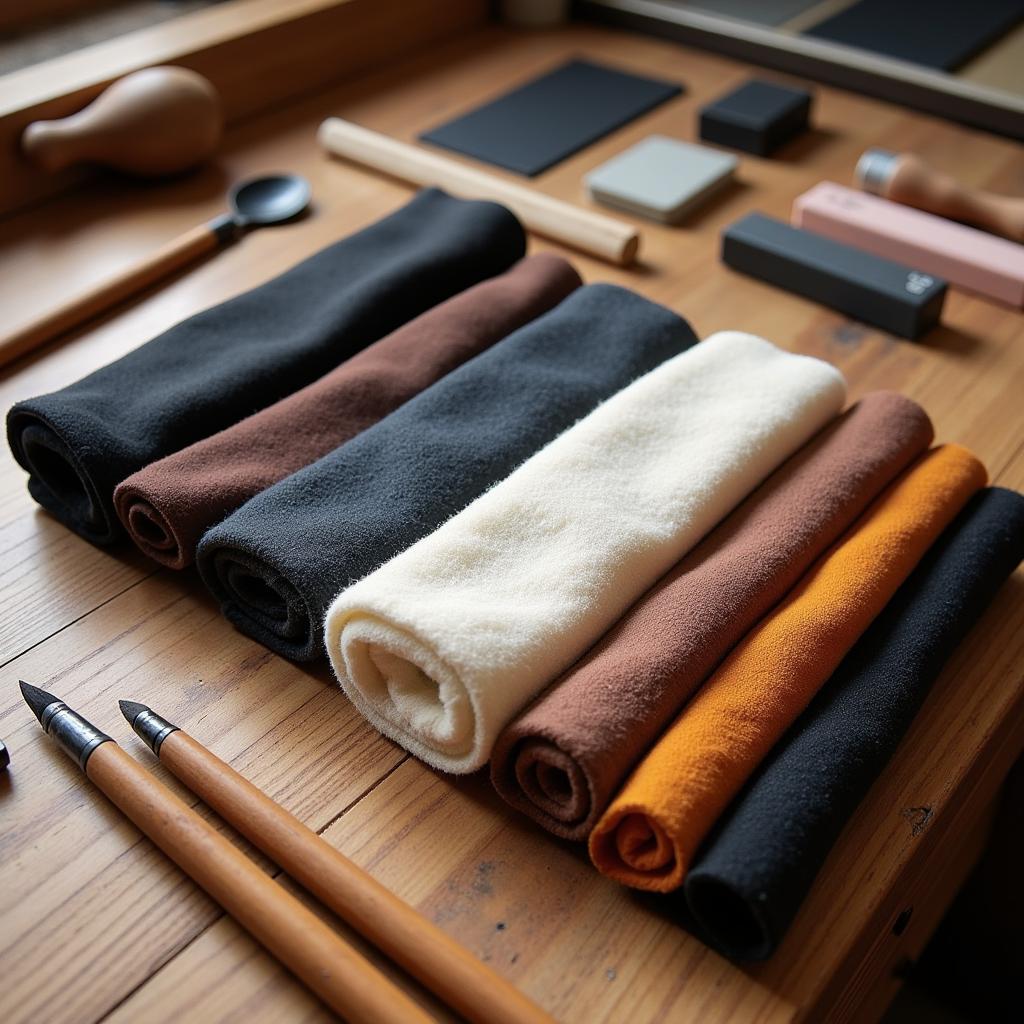Art Nouveau Playing Cards: A Guide to Collecting & Design
The allure of Art Nouveau Playing Cards lies in their exquisite fusion of art and functionality. Dating back to the late 19th and early 20th centuries, these cards transcend their primary purpose of entertainment, becoming miniature canvases for the era’s signature style. This comprehensive guide delves into the captivating world of Art Nouveau playing cards, exploring their history, design elements, notable artists, and valuable insights for collectors.
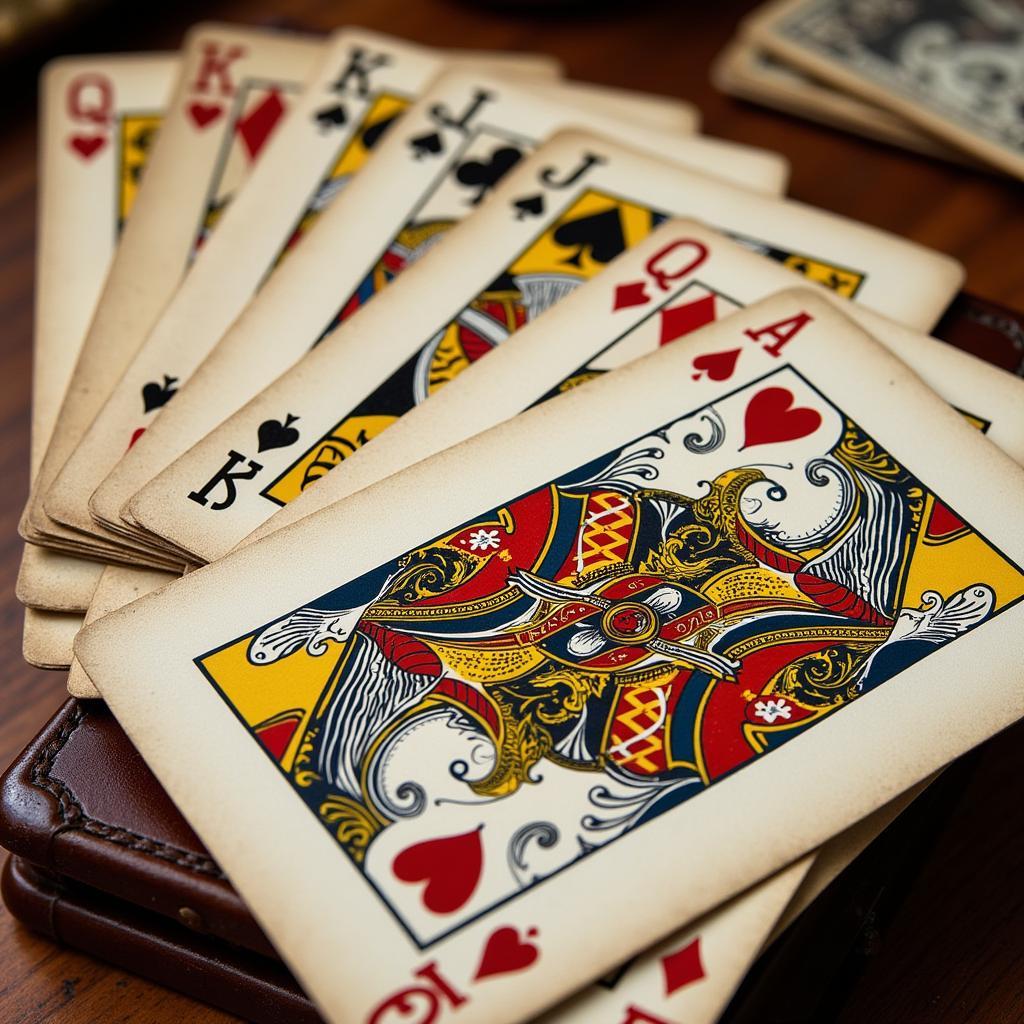 Antique Art Nouveau Playing Card Deck
Antique Art Nouveau Playing Card Deck
A Glimpse into the Art Nouveau Movement
Flourishing from the 1890s to the outbreak of World War I, Art Nouveau, meaning “New Art” in French, revolutionized art and design across Europe and beyond. Characterized by its embrace of nature, organic forms, flowing lines, and intricate details, the movement found expression in various artistic disciplines, from architecture and furniture to jewelry and, notably, playing cards.
The Allure of Art Nouveau Playing Cards
Art Nouveau playing cards stand out for their distinctive aesthetic that sets them apart from traditional playing cards. Let’s explore the key elements that define their charm:
-
Organic Forms and Flowing Lines: Inspired by the natural world, Art Nouveau playing cards feature sinuous curves, graceful lines, and motifs drawn from flowers, vines, leaves, and other botanical elements. These organic forms lend an air of elegance and fluidity to the card designs.
-
Intricate Details and Ornamentation: Attention to detail is paramount in Art Nouveau design. Playing cards from this period often showcase elaborate borders, intricate patterns, and delicate embellishments that enhance their visual appeal.
-
Female Figures and Symbolism: The image of the feminine is central to Art Nouveau, often depicted as ethereal, mysterious, and alluring. Many Art Nouveau playing cards feature beautiful women as central figures, representing various virtues, vices, or mythological characters.
-
Vivid Colors and Typography: Art Nouveau embraced a vibrant color palette, often incorporating rich hues like gold, green, and purple alongside muted tones. Furthermore, the typography of this era was equally artistic, with flowing scripts and decorative fonts complementing the overall design.
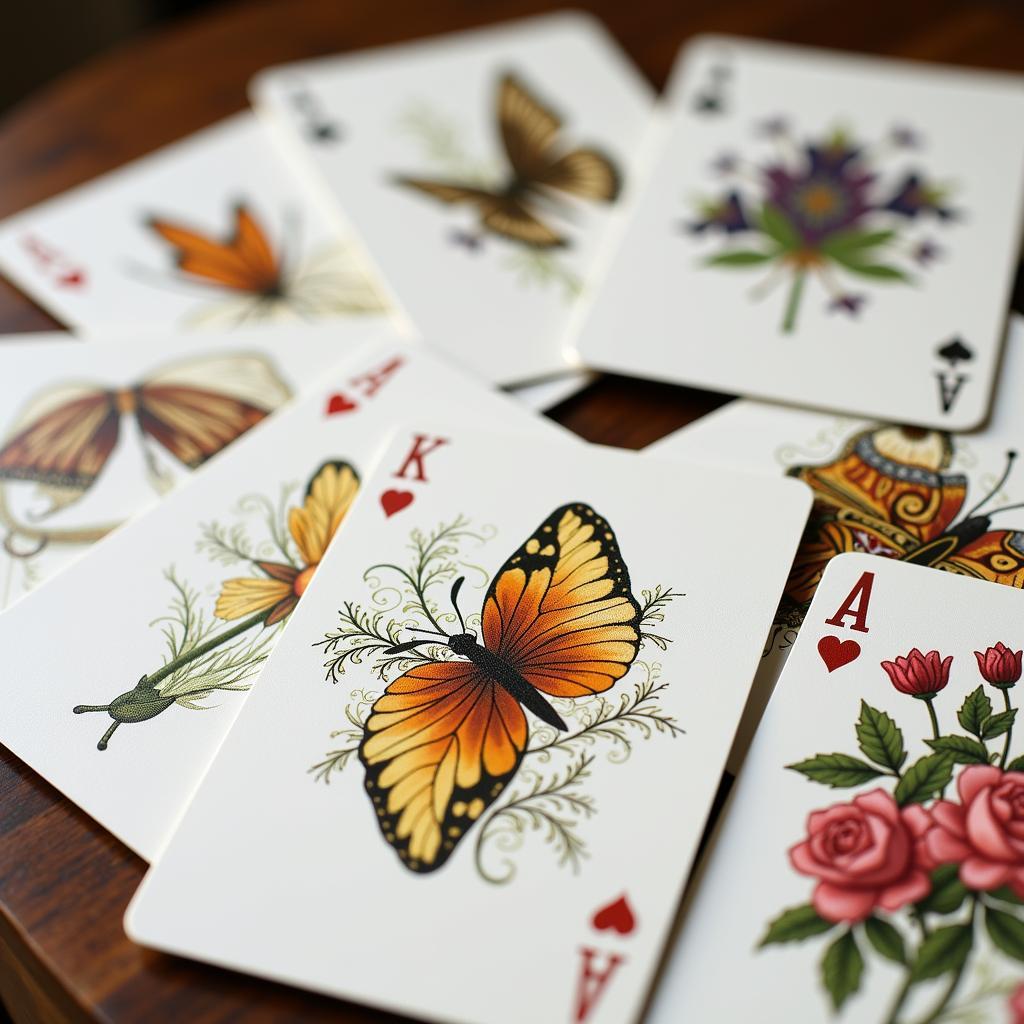 Detailed View of Art Nouveau Playing Card Illustrations
Detailed View of Art Nouveau Playing Card Illustrations
Notable Art Nouveau Playing Card Designers
The Art Nouveau movement attracted a constellation of talented artists who left their mark on playing card design. Some of the most notable names include:
-
Alphonse Mucha: Perhaps the most iconic Art Nouveau artist, Mucha’s distinctive style, characterized by flowing hair, idealized female figures, and intricate floral motifs, found its way onto numerous playing card decks, solidifying his place as a legend in both the art and playing card worlds.
-
Eugène Grasset: A pioneer of Art Nouveau in France, Grasset’s work often featured stylized floral patterns, sinuous lines, and a harmonious blend of natural and geometric elements. His contributions to playing card design further exemplify the movement’s aesthetic principles.
-
Gustav Klimt: Known for his opulent and symbolic paintings, Klimt’s influence on Art Nouveau playing cards is evident in the use of bold colors, intricate patterns, and stylized figures, often incorporating elements of mythology and symbolism.
Collecting Art Nouveau Playing Cards
For vintage enthusiasts and art lovers alike, collecting Art Nouveau playing cards can be a rewarding pursuit. Here are some factors to consider when building your collection:
-
Rarity and Condition: As with many antiques, rarity and condition significantly influence the value of Art Nouveau playing cards. Decks produced in limited quantities or those featuring designs by renowned artists are highly sought after by collectors. Additionally, the condition of the cards, including factors like wear, fading, and completeness, plays a crucial role in determining their worth.
-
Authenticity and Provenance: When acquiring Art Nouveau playing cards, it’s essential to ensure their authenticity. Look for reputable dealers and auction houses specializing in vintage playing cards. Documentation or provenance records can provide valuable insights into the history and authenticity of a deck.
-
Personal Preference: Ultimately, the most important factor is your personal preference. Focus on collecting decks that resonate with your aesthetic sensibilities and interests. Whether you’re drawn to the elegant floral motifs of Mucha or the stylized figures of Klimt, there’s a world of Art Nouveau playing cards waiting to be discovered.
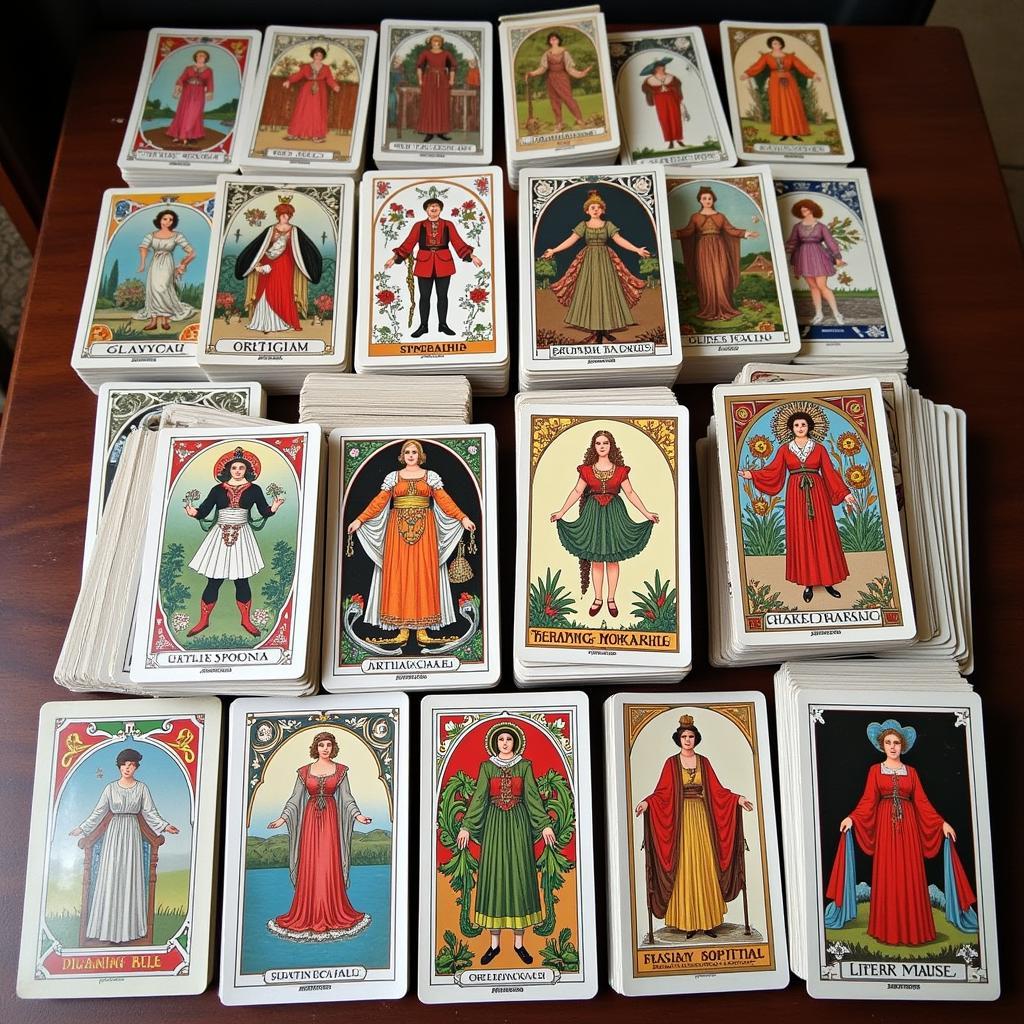 A Collection of Art Nouveau Playing Cards
A Collection of Art Nouveau Playing Cards
Conclusion
Art Nouveau playing cards are more than just tools for games; they are tangible pieces of art history. Their exquisite designs, characterized by organic forms, intricate details, and a celebration of nature, continue to captivate collectors and art enthusiasts alike. Whether you’re a seasoned collector or just beginning your journey, the world of Art Nouveau playing cards offers a fascinating glimpse into a bygone era of artistic innovation and craftsmanship.
